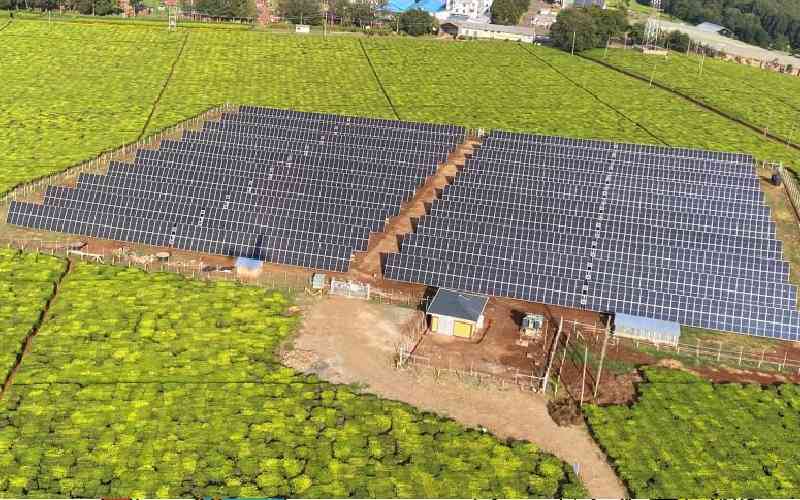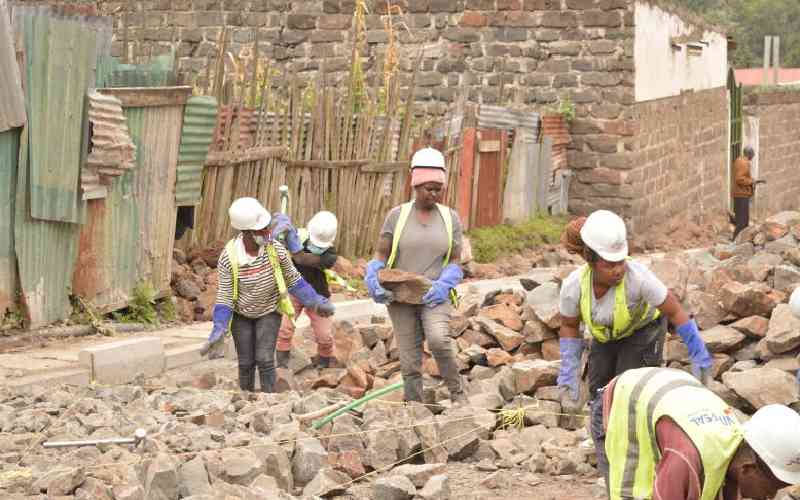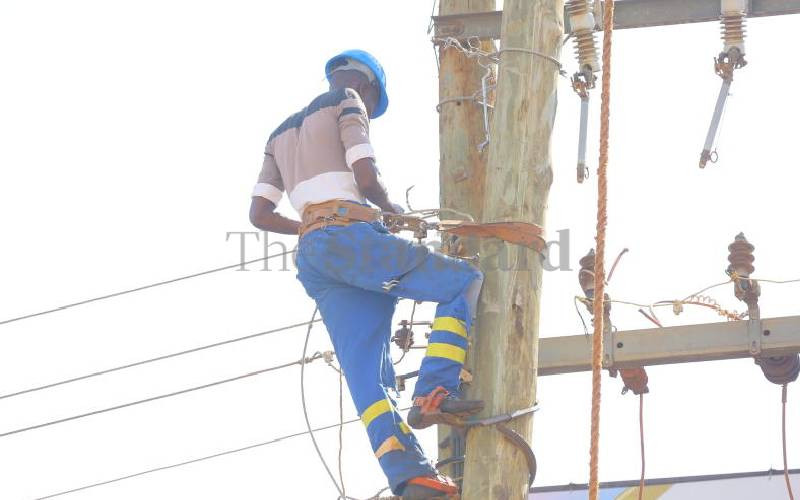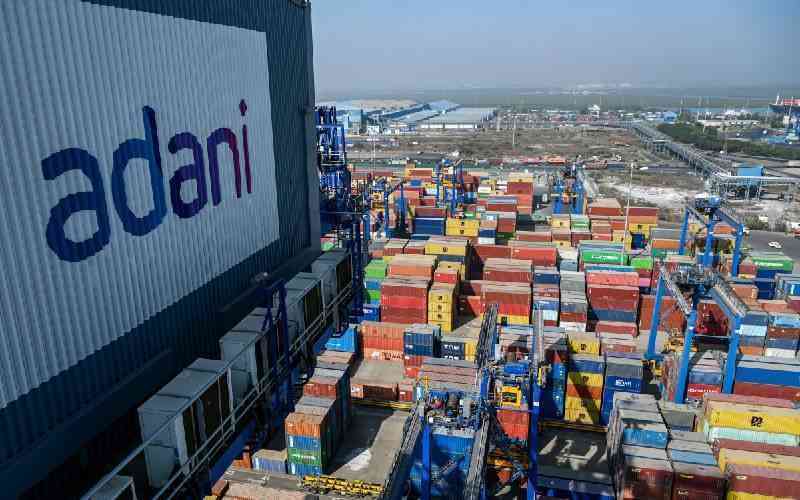Illegally connected wires crisscrossing rusty roofs and low-hanging cables without protective insulation are common sights in slums across Kenya.
Infrastructural inadequacies and unfulfilled economic promises have created a dangerous income-generation opportunity for unemployed youths who vandalise transformers to provide illegal electricity connections in the slums.
But now, scores of slum dwellers who have waited for years to be connected to the national grid are literally seeing light at the end of the tunnel as Kenya Power’s slum electrification efforts begin to bear fruit.
Rose Kemunto, a resident of Kayole’s Soweto slum, is one such beneficiary. Kemunto had been at the mercy of illegal electricity vendors for three years before she was connected to the national grid.
“At first, I was happy when the illegal vendors provided us with electricity since we had been living in complete darkness,” said the single mother of two. “We paid between Sh200 and Sh500 every month,” she said.
But within months, the reprieve for the poor slum dwellers turned into a nightmare as the illicit electricity vendors started exploiting and harassing them relentlessly. “They would hike charges every month and sometimes they would demand to be paid twice. I had to pay up because they never provided receipts,” Kemunto said. “It became unbearable.” Kemunto ekes out a living from cleaning houses and doing laundry work in Nairobi’s Eastlands area.
The illicit electricity vendors would routinely rough up non-paying customers and confiscate their property and even threaten to kill those who don’t pay on time. They charge up to Sh1,500 to reconnect disconnected households.
Safety concerns also abound. Children and even adults often accidentally touch the unprotected wires, causing electrocution, which can cause injury or even death. The connections also cause frequent slum fires that occur when the unprotected live wires touch and turn iron structures into death-carrying electric current conductors.
The ongoing slum electrification initiative seeks to alleviate these security concerns and put the illicit electricity-selling gangs out of business.
Through the support of the World Bank, Kenya Power is seeking to connect 66,000 slum households to the national grid at a subsidised rate of Sh1,760 for domestic use and Sh2,740 for commercial use, down from the Ksh35,000 paid for regular connections.
Pay for power when needed
“We are providing affordable, safe and most importantly, legal power connections to slum dwellers,” said Harun Mwangi, Kenya Power’s coordinator for rural electrification.
The World Bank is expected to reimburse the power distributor Sh1.2 billion for its investment in targeted slums in Nairobi, Thika, Nakuru and Kisumu, based on the number of connections made.
The electric metres are based on the pre-paid tariff so that the slum dwellers can pay on a day-to-day basis. One could spend as little as Sh100 per month.
Stay informed. Subscribe to our newsletter
Joyce Kamene, a resident of Kayole Soweto, says: “I can now pay for electricity whenever I need it. In case I travel upcountry, I don’t have to bother myself paying for it. I only need to monitor my meter regularly and buy electricity tokens whenever I need them. It is much cheaper.”
The gangs that have been edged out of the illegal electricity business are resorting to other businesses or crime for survival. “Some are now collecting garbage, while others are robbing residents but their days are numbered,” Kamene said. “They will not hold us hostage again.”
Hundreds of transformers are being installed to cater for the burgeoning population in slums. To reduce vandalism, the transformers are smaller than regular ones and are placed above the electric wires. Each transformer is expected to serve between 10 and 30 households.
Kenya Power is also using concrete poles instead of wooden ones, and special insulated wires that are safer than the exposed ones.
The electrification of slums is part of Kenya Power’s plan to connect one million additional power consumers to the national grid this financial year, representing a 36 per cent growth in its customer base.
 The Standard Group Plc is a
multi-media organization with investments in media platforms spanning newspaper
print operations, television, radio broadcasting, digital and online services. The
Standard Group is recognized as a leading multi-media house in Kenya with a key
influence in matters of national and international interest.
The Standard Group Plc is a
multi-media organization with investments in media platforms spanning newspaper
print operations, television, radio broadcasting, digital and online services. The
Standard Group is recognized as a leading multi-media house in Kenya with a key
influence in matters of national and international interest.
 The Standard Group Plc is a
multi-media organization with investments in media platforms spanning newspaper
print operations, television, radio broadcasting, digital and online services. The
Standard Group is recognized as a leading multi-media house in Kenya with a key
influence in matters of national and international interest.
The Standard Group Plc is a
multi-media organization with investments in media platforms spanning newspaper
print operations, television, radio broadcasting, digital and online services. The
Standard Group is recognized as a leading multi-media house in Kenya with a key
influence in matters of national and international interest.









